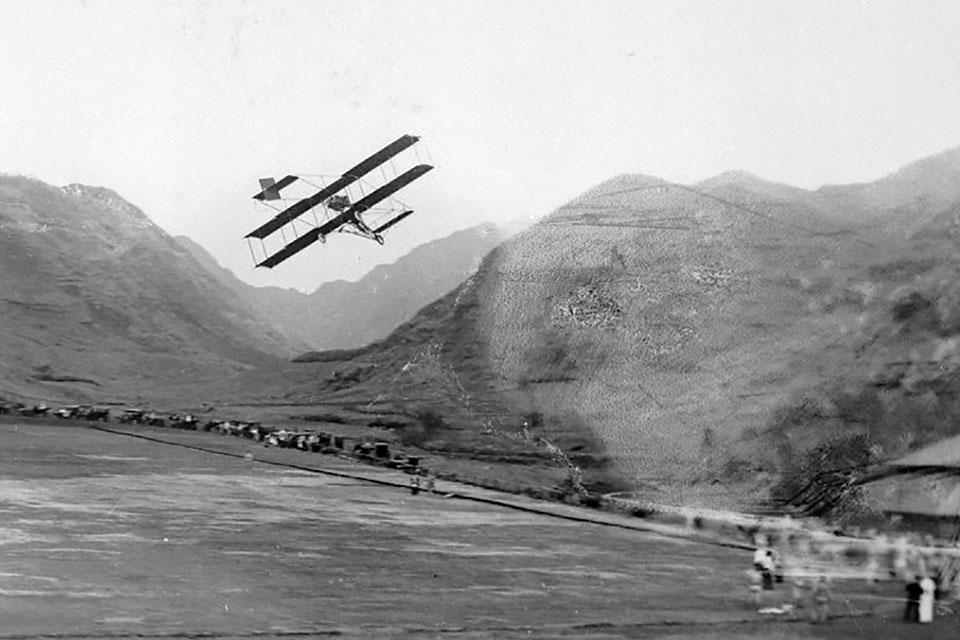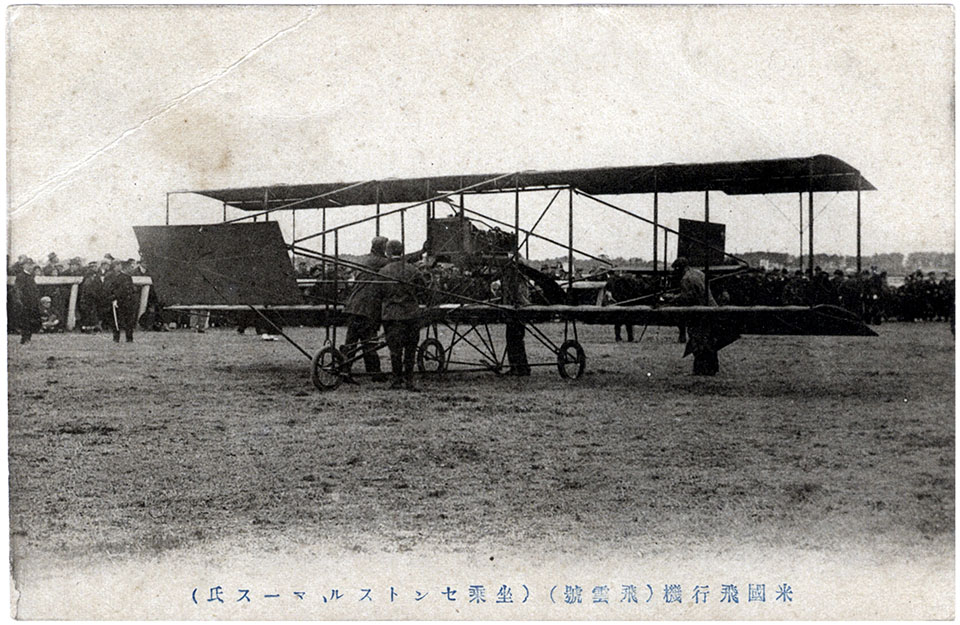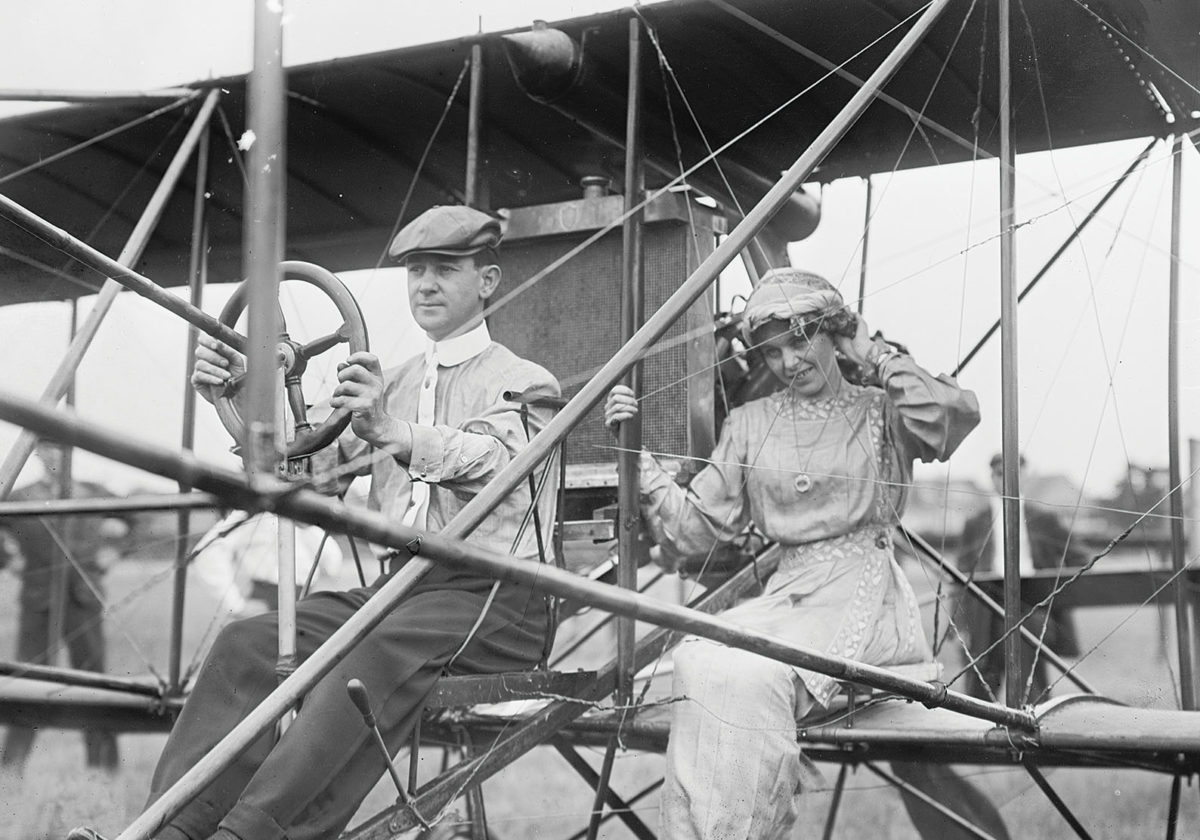Pioneer aviator Bud Mars thrilled airshow crowds, narrowly escaping death on several occasions, and was among the first to fly airplanes in the Far East.
In September 1910, prior to a San Francisco air meet, the American News Service touted James Cairn Mars of Muskegon, Mich., as “the most daring of American aviators.” Mars, better known as “Bud,” had gained a reputation for death-defying flights in early airplanes, but unlike some of his contemporaries, he managed to live to old age.
Mars began his career at 16 as a featured “carny” high-diver and over the next decade morphed into a balloonist and an innovative parachutist, advertising the use of a “self-steering” chute he dubbed the “fool killer.” From 4,000 feet he could steer it in any direction and land on the same spot from which he had ascended. By 1907 he had cofounded the American Airship and Balloon Company, which landed a contract to build the first Army “war airship,” a non-rigid blimp powered by a 50-hp engine, with a light gun affixed to the framework.
In 1910 Mars was a member of the Curtiss aviation team and like all early “birdmen” faced his fair share of mishaps. At the Memphis air meet on April 11, the engine on his Curtiss biplane stopped while he was flying at 75 feet. Mars lost control and plunged into an automobile. The touring car’s canopy top saved the occupants—three women and two children—and the aviator was only slightly injured. In Denver’s thin air on November 20, he wrecked his biplane during his third takeoff attempt but was unhurt. In December, while he was attempting to set a new altitude record at Fresno, Mars’ engine quit at 4,000 feet. In a free glide, he narrowly missed crashing into a row of cars and landed safely.

At a meet in Sheepshead Bay, N.Y., Mars took his wife Edna on a flight. Aviator Eugene Ely considered it too risky to take his wife Mabel up, so she appealed to Mars, who obliged and took her aloft. During a nighttime flight at Sheepshead Bay, he was blinded by a mosquito that “landed in his eye and for some time made things more interesting than agreeable,” according to the New York Daily Tribune. Upon landing, Mars wondered, “What would happen if two mosquitoes got in both my eyes?”
Mars wowed the crowd at the Montana State Fair by shutting off his engine as he came in for a landing. The River Press of Fort Benton reported, “When he was only a few feet above the ground the aviator suddenly turned on the power, the machine soared upward and then gently alighted on the grass.”
On November 12, 1910, Mars planned to fly from the deck of the Hamburg-America ocean liner Pennsylvania. Perched on an 85-foot ramp above the deckhouse, his plane would roll down the makeshift runway and into the air. The stunt was to be performed 50 miles out at sea, with Mars flying to shore with what would have been the first airmail delivery. Unfortunately, someone had left a tin pipe below the engine that got sucked into the wooden propeller and damaged the aircraft during an engine runup. Two days later his fellow Curtiss team member Ely made history by being the first man to fly from the deck of a ship, the light cruiser USS Birmingham.
During preparations for the January 1911 San Francisco international air meet, promoters announced that Mars would fly between buildings down some of the city’s cavernous streets and then “circle the Dewey monument and alight in the park in front of the Hotel St. Francis.” But Mars abruptly “jumped his contract” and went to Honolulu, announcing it would be the first exhibition site of a world flying demonstration tour that would earn him $50,000 compared to his $5,000 contract for the San Francisco air meet. Glenn Curtiss was not amused, cutting his ties with the aviator. The six-month tour eventually netted Mars $110,000 (about $3 million in today’s dollars).
After making the first flights in Hawaii, Mars visited 11 foreign countries: the Philippines, Japan, China, Korea, Singapore, Siam (Thailand), Sumatra, Java, India, Russia and Poland. According to a June 19, 1911, New York Times report, he “was the first man to carry the vision of aviation to the Far East.” Going aloft 250 times, he suffered three accidents but emerged unscathed. In many of these countries his aircraft were the first ever seen.

Mars told the Times his tour’s best reception was in Japan. Some 750,000 spectators turned out in Osaka to see their first flying machines. He said the Japanese army owned four airplanes but didn’t know how to operate them. He trained the first two Japanese army pilots (though both died in an accident four months later) and even took 11-year-old Prince Hirohito, the future World War II emperor, up for his first airplane flight. The Japanese, he said, “wanted to know how soon they could get a fleet” of airplanes.
In Tientsin, as his plane rose in the air, 25,000 Chinese peasants “scrambled in every direction and beat it.” Filipinos regarded him with “superstitious awe…[and] as a messenger from the devil [while] the Moros [Filipino Muslims] thought him a supreme being and bowed down.”
In Bangkok, Mars took the king of Siam on a 12-mile flight. The king, he related, “was a good fellow and an Oxford man.” In Calcutta, while attending a wedding, Mars reportedly “jumped a foot” when the band struck up “Yip-I-Addy-I-Ay,” a popular Western song.
During World War I, Mars was made an Army lieutenant by a special appointment from President Woodrow Wilson and trained pilots at Fort Omaha. He also offered the government one of his inventions—a wireless torpedo “capable of sustaining itself in the air automatically, while guided by wireless to the subject to be destroyed.” After the war Mars involved himself in real estate, flying schools and aeronautical inventions.
When Bud Mars died in California in 1944 at age 68, his wife Edna related that he regretted taking Japan’s Hirohito aloft, wishing the craft had “cracked up.”
This article appeared in the March 2021 issue of Aviation History. Click here to subscribe today!





